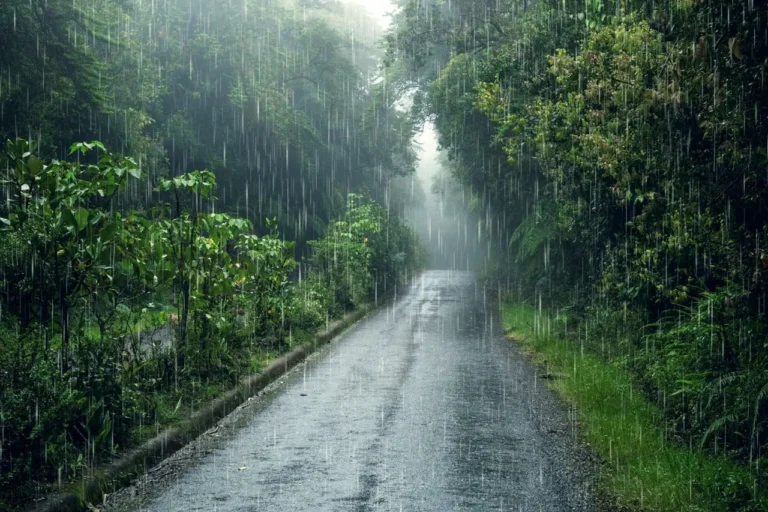The climate of the J&K region can be broadly categorized into four distinct climate zones: the arid region of Ladakh, the temperate climate of Kashmir Valley, the subtropical climate of the Jammu plains, and the alpine climate of the Pir Panjal and Himalayan ranges.
The region’s complex topography and location in the Himalayan mountain range give rise to unique climate zones that are influenced by altitude, precipitation patterns, and temperature.
Climate in J&K
Climate Zones
Jammu and Kashmir and Ladakh together are divided into three broad climate zones:
1. The temperate zone
It includes parts of the Jammu region, the Kashmir valley, and some parts of the Ladakh region.
The climate is moderate in this zone, with warm summers and cold winters.
2. The sub-tropical zone
It includes the lower parts of the Jammu region, which experience hot summers and mild winters.
3. The alpine zone
It includes high-altitude areas in Ladakh and parts of the Kashmir valley, where the climate is characterized by long, cold winters and short, cool summers.
Weather Patterns
| Season | Jammu | Kashmir | Ladakh |
|---|---|---|---|
| Spring | 15°C – 30°C | 10°C – 24°C | -5°C – 15°C |
| Summer | 30°C – 45°C | 15°C – 30°C | 10°C – 20°C |
| Autumn | 10°C – 30°C | 0°C – 15°C | -5°C – 10°C |
| Winter | 5°C – 22°C | -2°C – 10°C | -15°C – -30°C |
A. Spring season
a. Jammu:
The spring season in Jammu usually starts in March and lasts until May.
The temperature in Jammu during this season can range from 20°C to 30°C.
b. Kashmir:
In the lower regions of Kashmir, the spring season starts in March and lasts until May.
The temperature during this season can range from 15°C to 25°C.
In the higher regions of Kashmir, such as Gulmarg and Sonamarg, the temperature during this season can range from 10°C to 20°C.
c. Ladakh
The spring season in Ladakh usually starts in April and lasts until May.
The temperature during this season in Ladakh can range from 0°C to 15°C.
B. Summer season
a. Jammu:
The summer season in Jammu usually starts in June and lasts until August.
The temperature during this season in Jammu can range from 35°C to 45°C.
b. Kashmir:
The summer season in Kashmir usually starts in June and lasts until August.
The temperature during this season in the lower regions of Kashmir can range from 25°C to 35°C, while in the higher regions, it can range from 10°C to 20°C.
c. Ladakh:
The summer season in Ladakh usually starts in June and lasts until September.
The temperature during this season in Ladakh can range from 20°C to 30°C.
C. Autumn season
a. Jammu:
The autumn season in Jammu usually starts in September and lasts until November.
The temperature during this season in Jammu can range from 20°C to 30°C.
b. Kashmir:
In the lower regions of Kashmir, the autumn season starts in September and lasts until November.
The temperature during this season can range from 10°C to 20°C. In the higher regions of Kashmir, the temperature during this season can range from 5°C to 15°C.
c. Ladakh:
The autumn season in Ladakh usually starts in September and lasts until November.
The temperature during this season in Ladakh can range from 0°C to 15°C.
D. Winter season
a. Jammu:
The winter season in Jammu usually starts in December and lasts until February.
The temperature during this season in Jammu can range from 10°C to 15°C.
b. Kashmir:
The winter season in Kashmir usually starts in December and lasts until February.
The temperature during this season in the lower regions of Kashmir can range from 0°C to 10°C, while in the higher regions, it can range from -10°C to 0°C.
c. Ladakh:
The winter season in Ladakh usually starts in October and lasts until March.
The temperature during this season in Ladakh can range from -15°C to -30°C.
Related Post: Geography of JK
Impact of Climate Change
A. Glacial Retreat
The region has experienced a significant retreat of its glaciers over the past few decades, with the annual average mass balance of glaciers in Jammu and Kashmir declining by over 20% since the 1980s.
Impacts:
- Flooding and landslides in the short term.
- Water scarcity in the long term.
B. Changes in Precipitation Patterns
There has been a shift in precipitation patterns in the region, with an increase in extreme weather events such as floods and droughts.
Impacts:
- Increase in extreme weather events, such as floods and droughts.
- Changes in agricultural patterns and productivity.
C. Increase in Temperature
- The average temperature in the region has increased by about 1°C since the pre-industrial era and is projected to rise by another 1.5°C to 4.5°C by the end of the century.
Impacts:
- Heatwaves and related health impacts.
- Increase in vector-borne diseases, such as malaria and dengue fever.
D. Changes in Biodiversity
- Climate change is already affecting the biodiversity of the region, with changes in temperature and precipitation patterns impacting plant and animal species.
Impacts:
- Loss of habitat and endangerment of species, such as the snow leopard.
- Changes in ecosystem services, such as water purification and carbon sequestration.
Also Read: Crops in J&K
Summary
Jammu and Kashmir, situated in the Himalayan range, has a unique climate that varies from region to region.
The state experiences different types of climatic zones, such as temperate, sub-tropical, and alpine.
The region’s climate has a significant impact on the local population’s livelihood, including agriculture, horticulture, and tourism.
Climate change has also affected the region, leading to changes in temperature, precipitation, and ecological balance.
FAQ’s
-
What is the average temperature in Jammu and Kashmir?
Temperatures vary by region and season.
In Kashmir, the temperature ranges from -10°C to 35°C
In Jammu, the temperature ranges from 15°C to 45°C -
How does the climate differ across different regions of Jammu and Kashmir?
The climate in Jammu and Kashmir differs based on the region’s topography and altitude.
The plains of Jammu have a subtropical climate, while the Kashmir Valley has a temperate climate. -
How has climate change affected Jammu and Kashmir?
Climate change has caused rising temperatures, changes in precipitation patterns, and glacial retreats.
-
What steps are being taken to mitigate the impact of climate change in Jammu and Kashmir?
Sustainable tourism, renewable energy, and water conservation measures are being implemented.
-
How has climate change affected the region’s agriculture and water resources?
Climate change has resulted in decreased water availability and has affected agriculture in the region.




